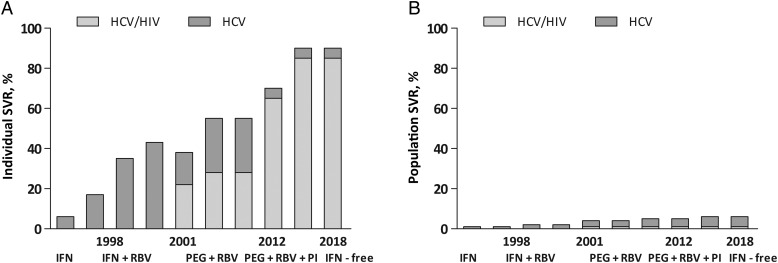Figure 2.
Disparity between potential hepatitis C virus (HCV) treatment efficacy and projected HCV treatment effectiveness. A, High HCV treatment efficacy if projected over 5-10 years; the sustained virological response (SVR) will increase from 55% with pegylated-interferon (PEG-IFN) and ribavirin (RBV) to approximately 70% in the era of PEG-IFN (65% in HCV/human immunodeficiency virus [HIV] coinfection), RBV, and a protease inhibitor (genotype 1 only, with HCV genotype 2/3 patients still having an SVR of approximately 80% with PEG-IFN/RBV). It is anticipated that by 2018, IFN-free agents will be available, with SVR equal to 90% in HCV infection (85% in HCV/HIV coinfection). B, The global impact of new treatment is negligible without expanded access; in 2005, estimates in Europe and the United States suggested that approximately 3% of patients had received treatment, with treatment uptake increasing by only 0.5% per year (adapted from Thomas et al [2], with permission). Abbreviations: HCV, hepatitis C virus; HIV, human immunodeficiency virus; IFN, interferon; PEG, pegylated IFN; RBV, ribavirin; SVR, sustained virological response.

